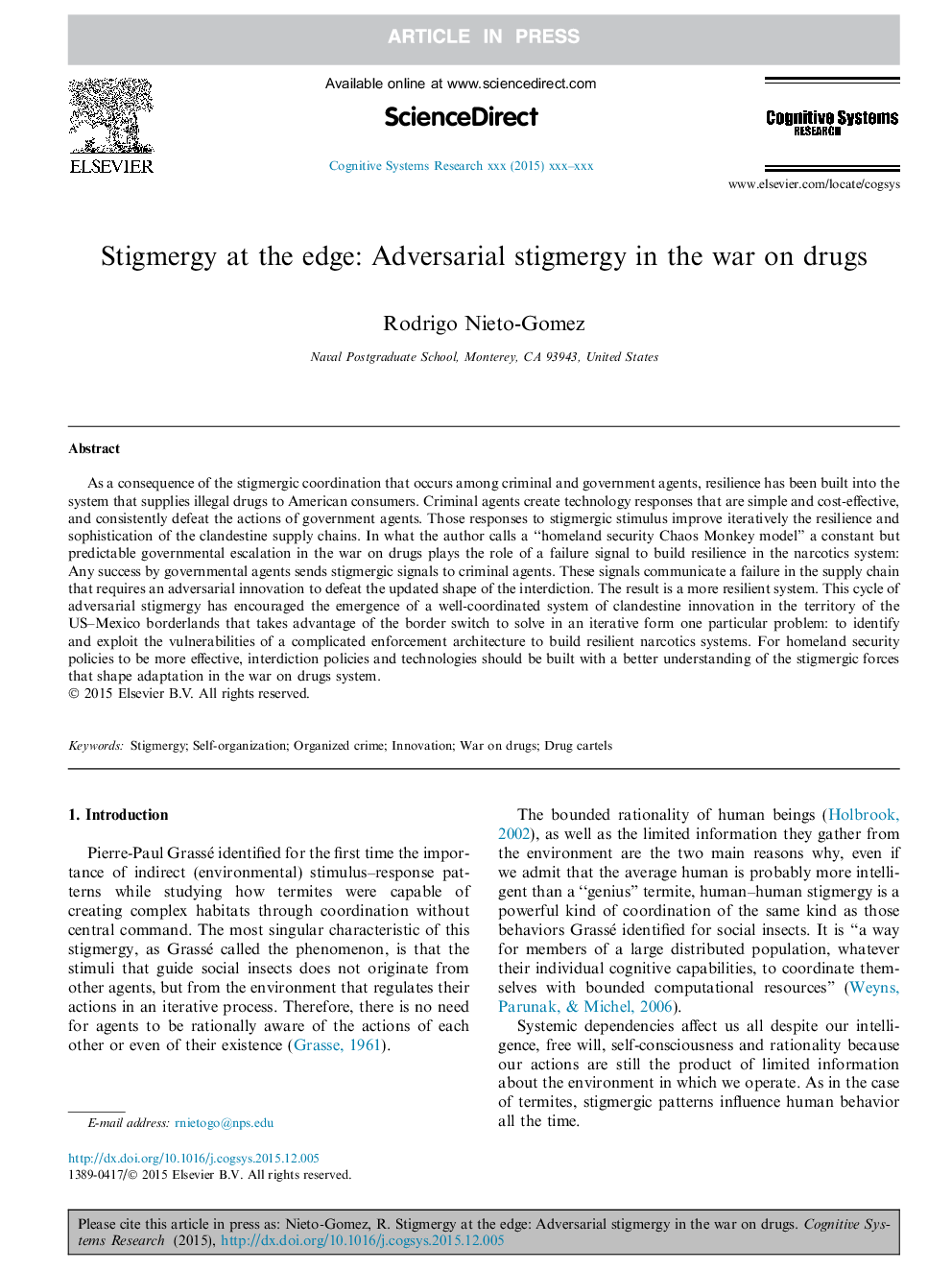| Article ID | Journal | Published Year | Pages | File Type |
|---|---|---|---|---|
| 6853842 | Cognitive Systems Research | 2016 | 10 Pages |
Abstract
As a consequence of the stigmergic coordination that occurs among criminal and government agents, resilience has been built into the system that supplies illegal drugs to American consumers. Criminal agents create technology responses that are simple and cost-effective, and consistently defeat the actions of government agents. Those responses to stigmergic stimulus improve iteratively the resilience and sophistication of the clandestine supply chains. In what the author calls a “homeland security Chaos Monkey model” a constant but predictable governmental escalation in the war on drugs plays the role of a failure signal to build resilience in the narcotics system: Any success by governmental agents sends stigmergic signals to criminal agents. These signals communicate a failure in the supply chain that requires an adversarial innovation to defeat the updated shape of the interdiction. The result is a more resilient system. This cycle of adversarial stigmergy has encouraged the emergence of a well-coordinated system of clandestine innovation in the territory of the US-Mexico borderlands that takes advantage of the border switch to solve in an iterative form one particular problem: to identify and exploit the vulnerabilities of a complicated enforcement architecture to build resilient narcotics systems. For homeland security policies to be more effective, interdiction policies and technologies should be built with a better understanding of the stigmergic forces that shape adaptation in the war on drugs system.
Related Topics
Physical Sciences and Engineering
Computer Science
Artificial Intelligence
Authors
Rodrigo Nieto-Gomez,
